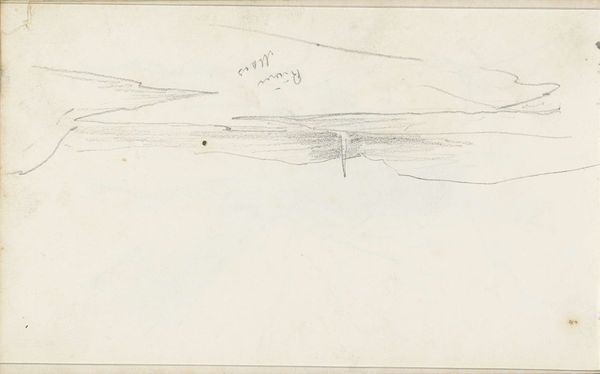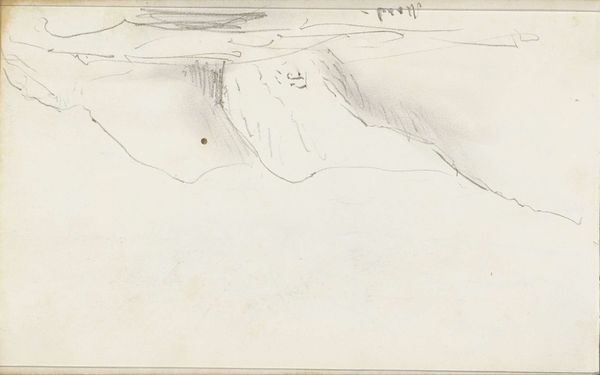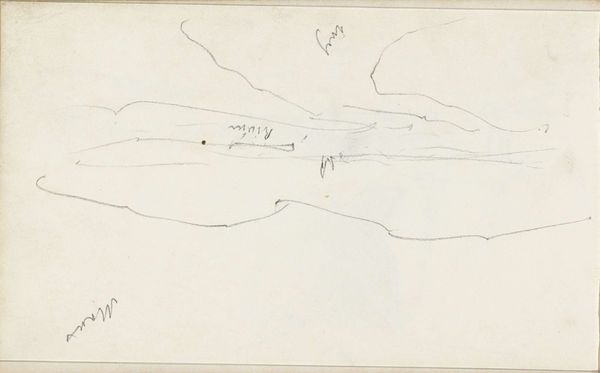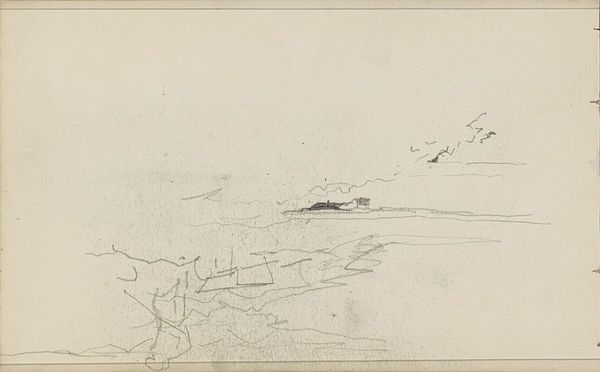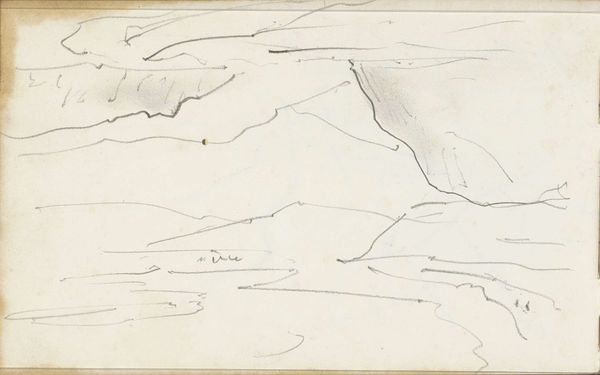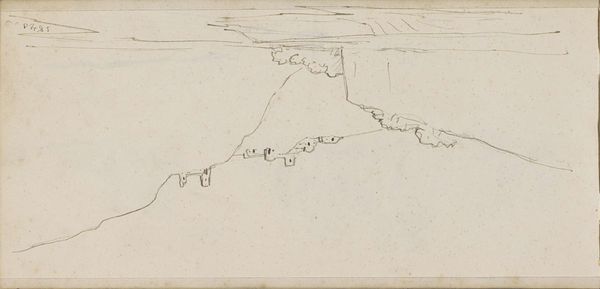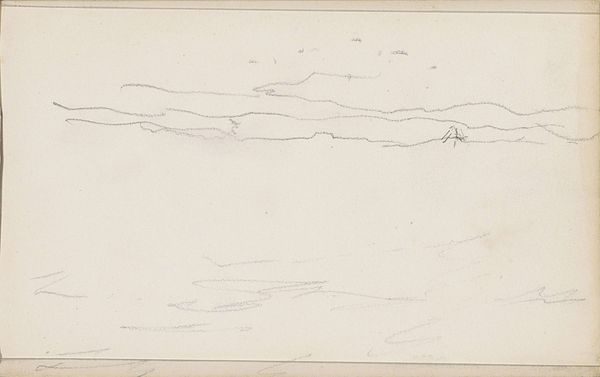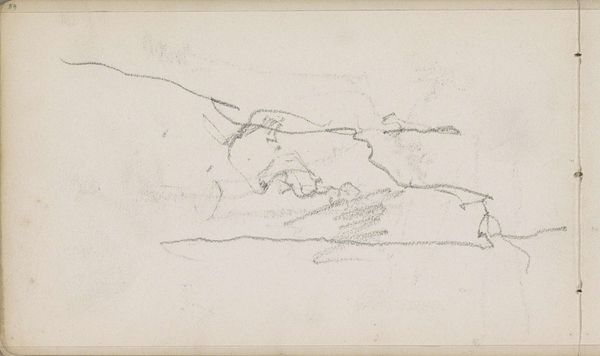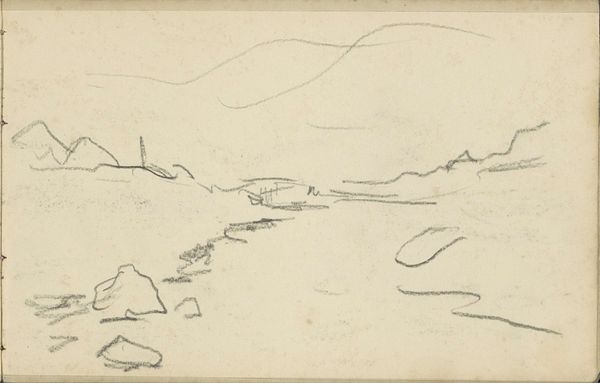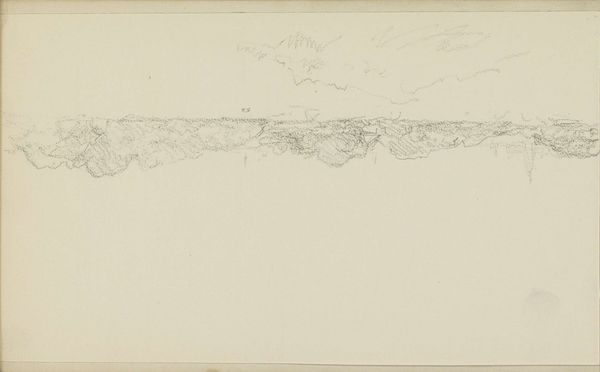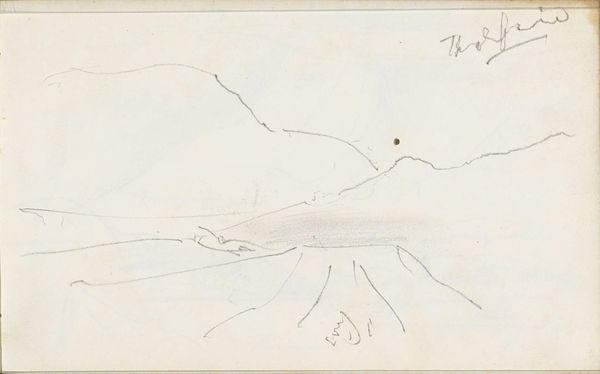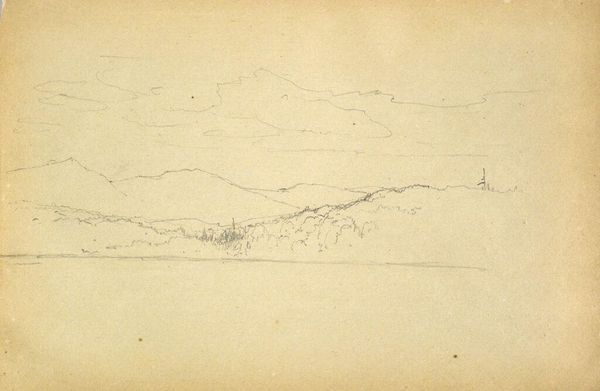
drawing, paper, pencil
#
drawing
#
pencil sketch
#
landscape
#
paper
#
romanticism
#
pencil
#
sketchbook drawing
#
realism
Copyright: Rijks Museum: Open Domain
Curator: Let's turn our attention to "Heuvellandschap aan de Maas," or "Hilly Landscape on the Maas," a pencil drawing on paper created around 1840-1841 by Johannes Tavenraat. It resides here at the Rijksmuseum. Editor: It has this wonderfully ephemeral quality, doesn't it? Just a fleeting impression captured in soft grays, like a memory trying to surface. The composition feels very raw. Curator: Precisely. You can almost see Tavenraat working on it en plein air. Notice how economically he renders the landscape – the barest suggestion of the hills, the hint of structures nestled within. The materiality, the paper itself, feels intrinsic to the work. Was the ready availability of paper enabling a more casual observation practice? Editor: Yes, it’s about accessibility and the democracy of art-making. But also the pencil, that unassuming tool, it suggests a directness, an immediate link between eye, hand, and the subject. The softness hints at the atmospheric perspective; the light is almost palpable. Did he consider what kind of paper was available and used at that time, how that affected production value or the reception of the sketch itself? Curator: The lack of embellishment feels significant. It shies away from idealization, instead focusing on documenting a specific place and time. It is tempting to project a nostalgic longing for an untouched world here; an idealized and sublime notion of nature typical of the romanticism movement is certainly a major influence, here. Editor: I agree there’s something inherently romantic. But to my eye, its strength lies more in its inherent workaday utility. This seems like the type of preparatory sketch done prior to an exhibition or grand landscape painting. We can ask about the labour and context embedded within it; How was this paper produced? What would it cost? This isn't simply romanticism in isolation, it is part of broader production economies. Curator: Absolutely. It serves as a testament to how seemingly simple materials, like pencil and paper, can capture a wealth of emotions. A fleeting moment becomes monumental by committing the drawing. Editor: Right, this small study also reminds me to not separate technique, place, time, production and labour - an entangled confluence within which any artist works.
Comments
No comments
Be the first to comment and join the conversation on the ultimate creative platform.
